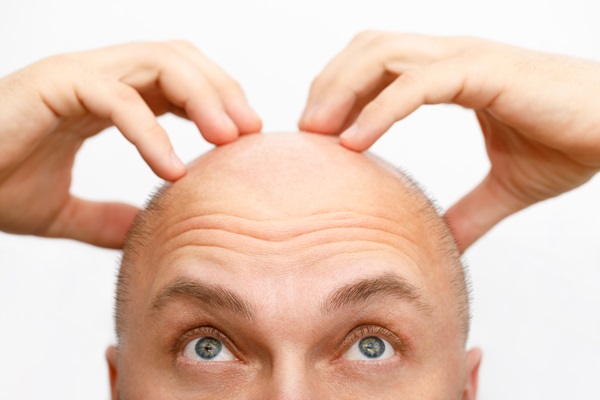Female Pattern Baldness Treatment: How It Differs

Male pattern baldness receives a fair amount of attention, but female pattern baldness is less discussed. This review takes a close look at female pattern baldness and highlights the various female pattern baldness treatment options that are available for women who have noticed signs of hair loss.
An overview of female pattern baldness
According to Harvard Health, female pattern baldness impacts approximately one-third of all women at some point in their lives. It helps to know more about the condition and the female pattern baldness treatment options so patients can make informed decisions.
What is female pattern baldness?
Female pattern baldness refers to hair loss in individuals who were assigned female at birth. It often takes a different pattern and has a different cause than male pattern baldness. Subsequently, the treatment options are usually different too. Although less common than male pattern baldness, female pattern baldness is still highly prevalent and affects many women. This condition is most common in women over the age of 60, though it can occur earlier in life.
What causes female pattern baldness?
Female pattern baldness is usually hereditary, and the individual’s age and hormones also play a role in its onset. The older the individual is, the higher the risk of experiencing female pattern baldness. Certain health conditions can also increase the likelihood of female pattern baldness. However, this condition should not be mistaken for hair loss with other causes (e.g., hair loss related to thyroid gland disease).
What are female pattern baldness treatment options?
Several treatment options are available for female pattern baldness. Keep in mind, however, that the treatment options for women are different than those for men. They typically include medications and hair transplantation, and alternative treatments, such as PRP therapy and laser therapy, may also be available.
Medications
Medication is commonly prescribed for female pattern baldness, usually a drug known as Minoxidil, which is FDA approved. The FDA initially approved a 2% dose of Minoxidil, and it has since approved a 5% solution for when more potent doses are needed. Although effective in many cases, this drug does not work for every woman. Patients who do see desirable results noticed improvements around two months after starting treatment. Most patients who see results notice significant regrowth of hair in as little as four months.
Other medication options may be available for women depending on the specific reason that they have experienced hair loss. For example, a woman who has a severe iron deficiency may experience hair loss as a result. In this case, iron supplements may be a part of the treatment plan. Another medication that may help is anti-androgens (for women who produce an excess number of androgens). All medication plans are personalized according to what works best for each patient.
Hair transplantation
A hair transplant involves the removal of excess hair follicles from one area of the scalp (the donor area) and the placement of the follicles where hair loss has occurred. There are two types of hair transplants: FUE transplants and FUT transplants. An FUE transplant involves removing each follicle one at a time and transplanting them to the implant site. An FUT transplant is similar, except a strip of hair follicles is removed at once, rather than one strand at a time. Hair transplantation is a great option if medications are ineffective or the patient prefers a faster and more effective solution. That said, a hair transplant is more invasive and costly than medications.
How to determine the best option for female pattern baldness treatment
Hair doctors should recommend a personalized treatment plan based on the specifics of the patient’s situation. Ultimately, the extent of the hair loss, along with the patient’s treatment preference and budget, should play a role in determining which treatment is most appropriate and likely to produce the best results. A patient can develop a treatment plan during a consultation with a hair doctor.
Are you experiencing signs of female pattern baldness?
A consultation with a hair loss treatment provider is the first step to receiving proper female pattern baldness treatment. Here at our office, we specialize in female pattern baldness treatment. If you have experienced signs and symptoms of hair loss and want to find out more about your female pattern baldness treatment options, please do contact us today, and schedule a convenient time or a consultation with our friendly and experienced team of hair restoration professionals. We are happy to help!
Get more information here: http://dillonhair.com or call Dillon Hair Restoration at (800) 518-9307
Check out what others are saying about our services on Yelp: Female Pattern Baldness Treatment in Schaumburg, IL.
Recent Posts
Hair loss can usher in mixed emotions and damper your self-esteem, whether or not you were expecting the day. Fortunately, hair plugs or grafts can provide patients with a full head of their natural hair. If thinning or balding is something you are experiencing right now, help is available at our Schaumburg office. First, review…
Hair thinning treatments are far more versatile than they get credit for. Our team works closely with each patient to determine the root cause of their thinning tresses and craft an effective treatment plan. Take a closer look at common causes of hair thinning and the various methods we can use to treat it.Many factors…
Hair loss can significantly impact people, affecting their self-confidence and interpersonal relationships. Fortunately, hair grafting, also known as hair transplantation, provides a viable option to restore the natural hairline. If you are still deciding whether to pursue a hair graft, here are three reasons to consider it.Unlike temporary solutions like wigs or hairpieces, a hair…
For those with wrinkled skin, Botox® injections can provide great relief. While it may be a natural sign of aging, the presence of wrinkles can be frustrating to some. Thanks to the scientific research and testing in the 1990s by several dermatologists, Botox® was approved in 2002 by the Food and Drug Administration for cosmetic…


